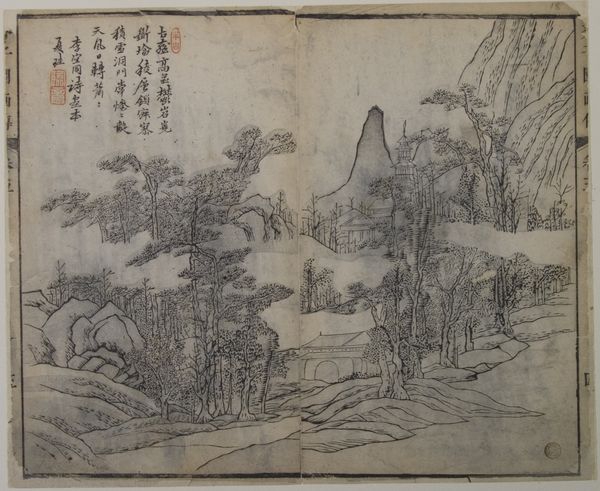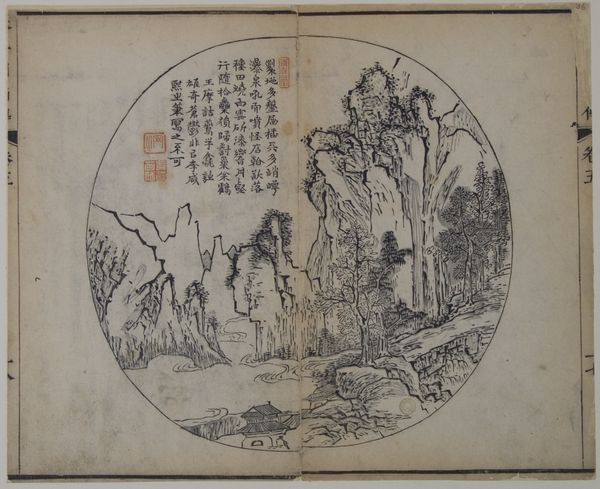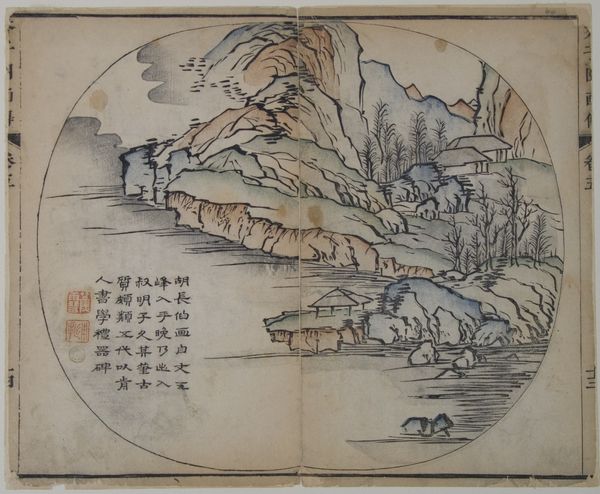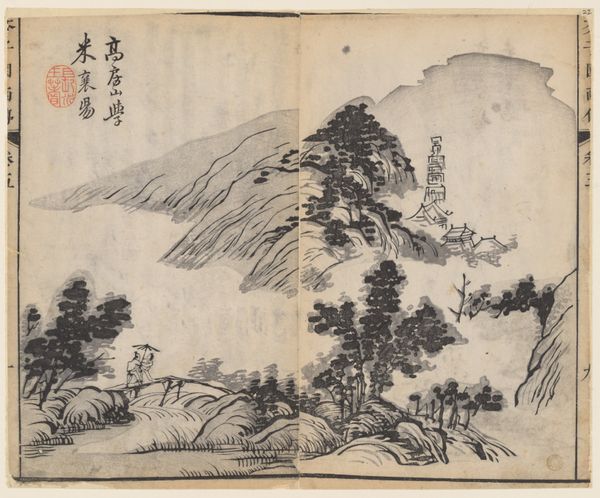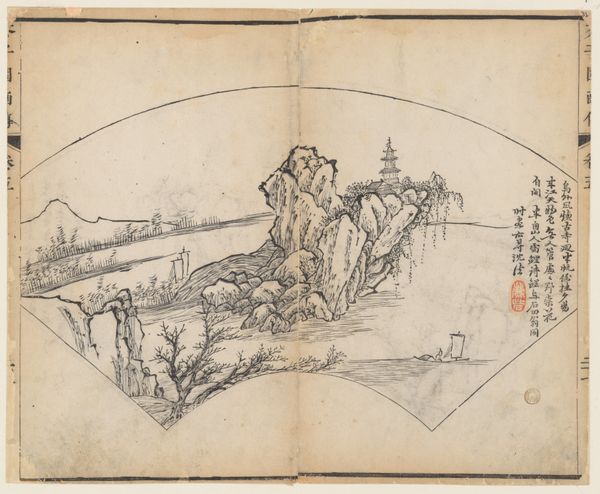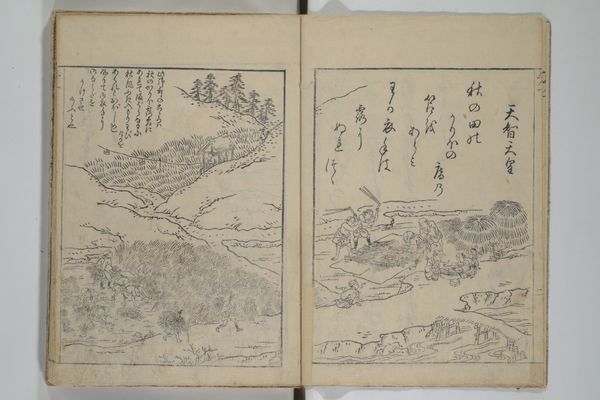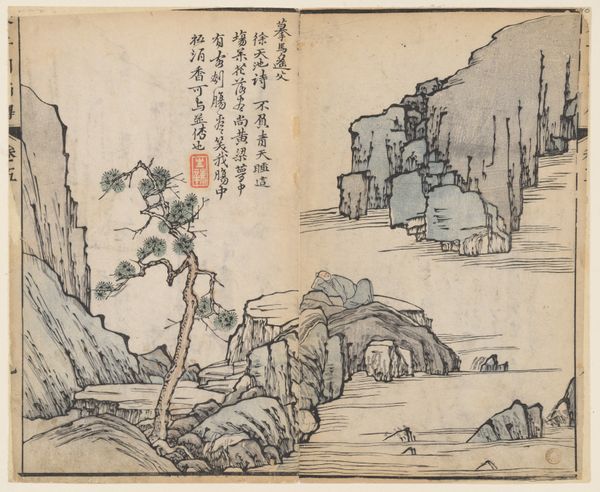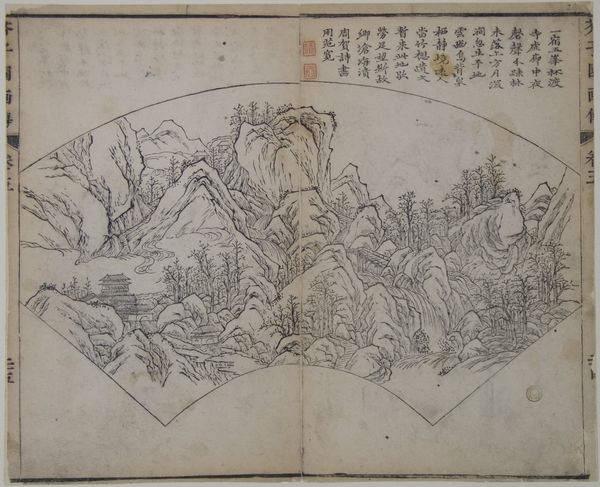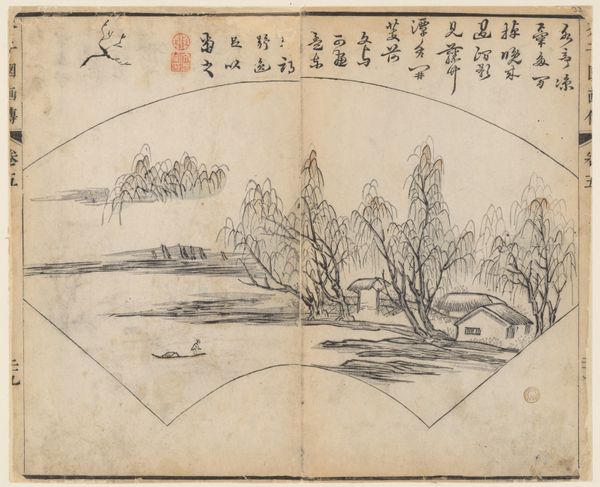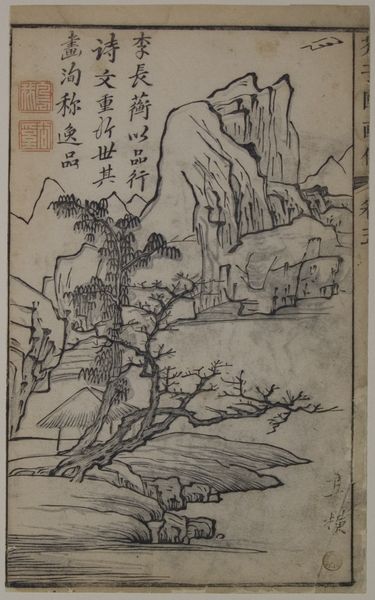
drawing, print, paper, ink, woodblock-print
#
drawing
# print
#
asian-art
#
landscape
#
paper
#
ink
#
woodblock-print
#
geometric
#
line
Dimensions: 9 5/8 x 11 13/16 in. (24.4 x 30 cm)
Copyright: Public Domain
Editor: This is a page from the Jie Zi Yuan, an undated ink drawing and woodblock print on paper. I’m struck by the sharp lines and the contrast between the built structures and the natural landscape. How do you interpret this work? Curator: Well, seeing this work, I’m drawn to think about cultural production and knowledge dissemination in 17th-century China. The Jie Zi Yuan, or Mustard Seed Garden Manual of Painting, wasn’t just an art book, but a tool for broader societal access to art and culture. Consider who was given the authority to dictate these rules, and whose aesthetics were being excluded? How might the act of standardizing artistic techniques reinforce existing social hierarchies? Editor: That's interesting. So, the book was also a method of instilling or strengthening cultural authority. Curator: Exactly. These weren’t neutral guides. Think about the act of printing and circulating these images—how did that democratize art education while also solidifying certain canons of taste? Whose vision of landscape is considered important and whose is disregarded, whose is amplified by virtue of representation, whose silenced? What’s present, and equally, what’s absent? Editor: So by reproducing and distributing these images they're solidifying a cultural view. What do you see as some absences here? Curator: I wonder about the lives of ordinary people in these idealized landscapes. Are their stories and experiences represented, or are we seeing a vision primarily concerned with the elite? It prompts me to consider how art functions in the creation and perpetuation of cultural power dynamics. Editor: That gives me a lot to consider about the social function of art manuals and whose perspectives get prioritized. Curator: Precisely, looking beyond the image itself and situating it within its historical and social framework allows us to ask critical questions about power, representation, and cultural values. I leave thinking of the power and impact of artistic choices.
Comments
No comments
Be the first to comment and join the conversation on the ultimate creative platform.
